How AI Sensors Sync Data for Pest Control
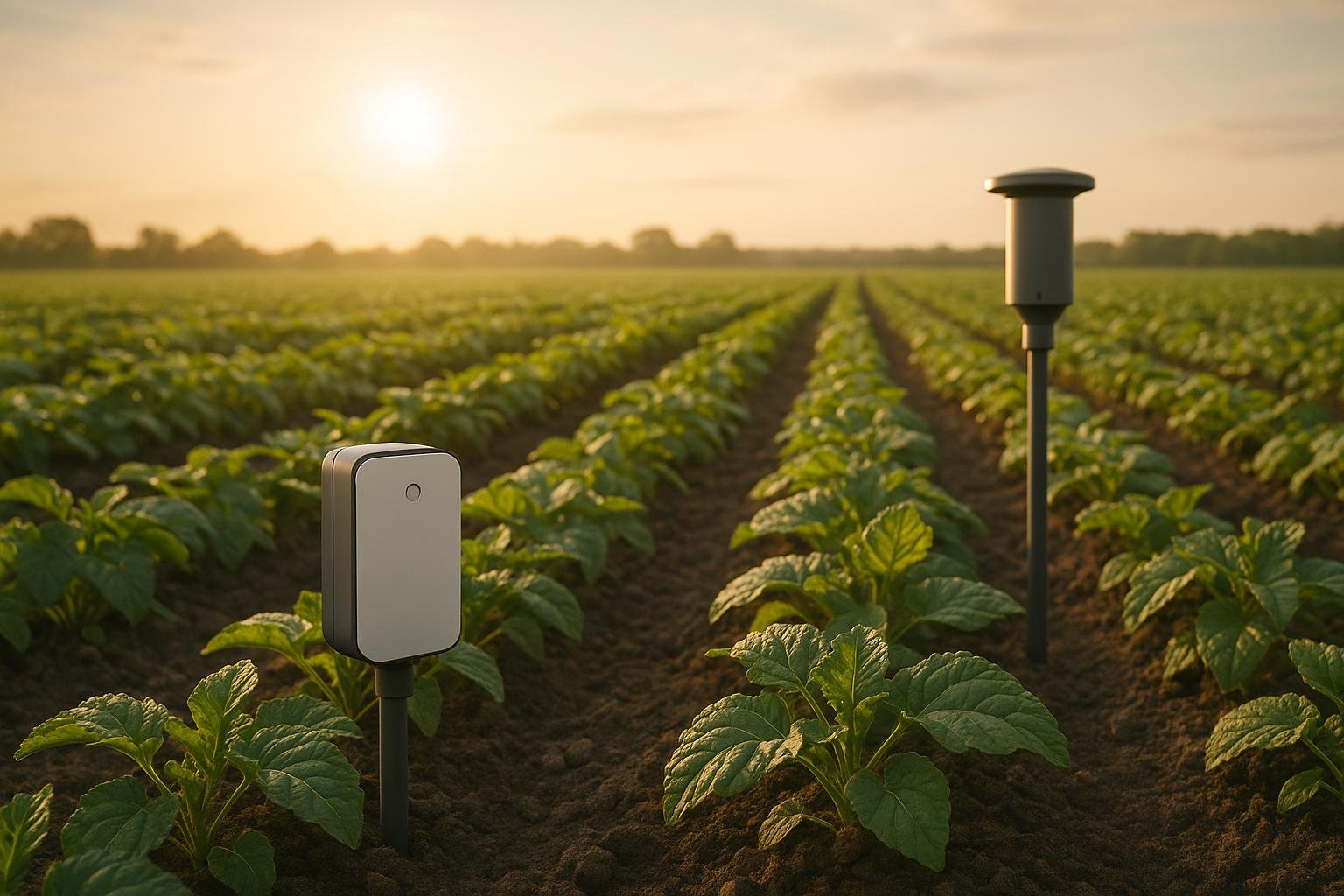
AI sensors are reshaping pest control by offering smarter, faster, and more precise solutions. These systems use multiple sensor types - like imaging, sound, and weather sensors - to monitor pest activity and environmental conditions. By syncing this data in real time, they detect pest problems early, reduce false alarms, and enable targeted responses. Here's what you need to know:
- How They Work: AI sensors collect and process data like images, sounds, and soil conditions. They cross-check information from multiple sources to identify pests and predict infestations.
- Key Benefits: Early detection, reduced pesticide use, and better pest management decisions.
- Examples in Action: Tools like "Tiny-LiteNet" achieve high accuracy in pest detection while being efficient and compact.
- Challenges: High installation costs, maintenance needs, and occasional false alerts.
- Future Improvements: Affordable sensors, better algorithms, and on-site data processing are expected to make these systems more accessible.
AI-powered pest control systems are transforming how we protect crops and gardens, offering a smarter way to manage pests with precision and efficiency.
How AI Multi-Sensor Systems Work
What Are AI Sensors?
AI sensors are smart devices that go beyond just gathering raw data - they’re equipped with artificial intelligence to process, interpret, and even make decisions in real time. Unlike traditional sensors that only collect information, these advanced tools can analyze what they detect and act accordingly.
In pest control, AI sensors function as the "eyes and ears" of the system. They monitor pest activity and assess environmental conditions that might encourage pest populations. The AI component helps differentiate between harmless garden activity and actual pest threats, cutting down on false alarms and improving precision.
Here’s how different types of sensors contribute:
- Weather sensors measure temperature, humidity, wind, and rainfall to monitor conditions that pests thrive in.
- Imaging sensors capture visible and infrared images to spot pest movement and identify species.
- Sound sensors pick up pest-specific noises, like sounds made during feeding, mating, or movement.
- Soil sensors track moisture, pH levels, nutrient content, and underground activity, such as root-feeding insects or soil-dwelling larvae.
By combining these different sensor types, the system achieves a higher level of detection accuracy.
How Multiple Sensors Work Together
When AI sensors work together through a process called sensor fusion, they integrate data from various sources to create a detailed picture of your garden or crops. While each sensor provides valuable insights individually, their combined data offers a much clearer and more reliable understanding of pest activity.
For instance, imagine this scenario: A weather sensor detects rising humidity, which often precedes certain pest infestations. At the same time, soil sensors notice increased moisture in specific areas, and imaging sensors spot small insects nearby. The AI system processes all this data together, identifying patterns that signal an emerging pest problem - often before you can see any visible damage.
This multi-sensor approach also reduces false alarms. A single motion sensor might alert you to harmless factors like beneficial insects or wind-blown debris. But when paired with imaging sensors that confirm pest characteristics and sound sensors that detect pest-specific noises, the system becomes much better at identifying real threats.
Another advantage is cross-validation. If an imaging sensor spots damage on leaves, soil sensors can verify whether there’s corresponding activity at the roots. Meanwhile, weather sensors provide context about environmental conditions. This layered approach ensures that pest management decisions are based on solid, well-rounded data rather than isolated observations.
Timing is another critical factor. Different pests are active at different times and under varying conditions. For example, nocturnal pests require a different detection strategy than those active during the day. The AI system adjusts sensor activity based on the behavior patterns of specific pests and current environmental factors, making detection even more effective.
How AI Collects and Syncs Sensor Data
Continuous Data Collection
AI-powered sensors work around the clock, capturing pest activity no matter the time of day. This 24/7 monitoring ensures that no pest behavior goes unnoticed, whether it happens during sunny afternoons or late-night hours.
Sensors operate on specific intervals based on the type of data they collect and the level of pest risk. For instance:
- Weather sensors take readings every 30 seconds.
- Imaging sensors capture data every 5 minutes during peak activity.
- Soil sensors measure conditions every 15 minutes.
This tailored approach ensures that data collection aligns with pest activity patterns, providing timely and relevant information.
To avoid blind spots, sensors are placed strategically to create overlapping zones. If one sensor malfunctions, nearby devices fill the gap, ensuring uninterrupted surveillance. Additionally, the system adapts sampling rates based on conditions. For example, during warm, humid evenings - when pests are most active - sensors increase their data collection frequency. Conversely, during low-risk periods like cold winter days, the system slows down data collection to conserve resources.
Data is stored both locally on the sensors and centrally in the main AI system. This dual storage method ensures that even if there’s a temporary network issue, data remains safe. By combining local backups with centralized storage, the system guarantees a continuous flow of information for accurate analysis.
AI Data Syncing Process
The syncing process starts when sensors send their collected data to the central AI hub. Each data point is time-stamped, ensuring events are sequenced correctly across all sensor locations. This synchronization helps the system track pest movements and environmental changes happening simultaneously in different areas.
AI algorithms use data fusion techniques to merge information from various sensors. For example, if soil sensors detect increased moisture at 2:30 AM, the AI cross-references this with temperature readings and any movement captured by imaging sensors at the same time. This combination of data builds a clearer picture of pest activity.
To maintain accuracy, the system validates incoming data. If an imaging sensor detects movement but nearby sound sensors pick up no related audio, the AI investigates further before issuing an alert. This cross-checking minimizes false alarms and ensures actions are based on reliable data.
The system prioritizes urgent pest alerts using priority queuing, which ensures immediate threats are addressed without disrupting overall monitoring. Communication protocols also optimize how data moves across the network. Routine data is compressed to save bandwidth, while critical pest-related information is transmitted in full detail. This ensures high-priority alerts are delivered quickly, even when the network is busy. After syncing, the system refines and verifies the data to maintain its reliability.
Keeping Data Accurate and Reliable
To ensure accuracy, the AI system automatically calibrates sensors. It compares readings from nearby sensors to detect any drift or performance issues. If discrepancies exceed acceptable limits, the affected sensor is flagged for recalibration or replacement. This self-checking mechanism keeps the entire network functioning smoothly.
Environmental conditions can impact sensor performance, so the AI adjusts its analysis accordingly. For instance, strong winds might cause motion sensors to detect false movements, or heavy rain could temporarily affect imaging sensors. By factoring in weather conditions, the system ensures pest detection remains accurate.
The AI also uses data filtering techniques to remove irrelevant information, such as background noise or routine environmental changes. This preprocessing step allows the system to focus on genuine pest-related signals, improving the accuracy of its analysis.
Each sensor location has a historical baseline that defines normal environmental parameters and activity levels. These baselines help the AI distinguish between regular fluctuations and unusual activity that might indicate a pest issue. As seasons change, the system updates these baselines to prevent false alerts caused by predictable environmental shifts.
To further enhance reliability, the system performs redundancy checks by cross-referencing critical measurements from multiple sensors. For example, soil moisture levels are confirmed using data from several nearby sensors, reducing the risk of errors caused by a single faulty unit.
Finally, error detection algorithms continuously monitor sensor performance. If a sensor shows signs of malfunction - like slower response times or inconsistent data - the system adjusts its reliance on that sensor and schedules maintenance. This proactive approach ensures that even as sensors age or face challenges, the overall system remains effective.
AI Models for Pest Detection and Control
How AI Detects Pest Activity
AI models rely on machine learning to analyze data from various sensors, helping identify pest activity that might escape human observation. By training these models on extensive datasets of pest behavior, they can detect infestations early - often before visible damage occurs.
For example, image recognition systems process visual data from cameras and imaging sensors to spot signs like movement, feeding damage, or breeding sites. These systems can distinguish pest-related damage - such as puncture marks, residue, or clusters of damage - from stress caused by environmental factors. When conditions favor rapid pest reproduction, the system becomes more sensitive, ensuring quicker detection.
Pattern analysis is another key feature. By examining recurring activity cycles, such as spikes in pest activity during specific times or changes in soil conditions, the system flags areas that may require deeper investigation, especially for underground pests.
AI also uses behavioral modeling to predict pest movements. If sensors detect activity in one area, the system estimates the likely spread based on factors like wind direction, plant density, and historical trends. This predictive capability allows for faster, more precise responses.
Additionally, AI correlates environmental data - such as soil moisture levels - with visual symptoms to differentiate pest damage from other issues like drought stress. This cross-referencing ensures a more accurate diagnosis of plant problems, enabling targeted interventions.
Automated Pest Control Actions
When pest activity is confirmed, AI systems spring into action with tailored responses, minimizing pesticide use while maximizing effectiveness.
For localized infestations, the AI calculates and applies precise treatment doses directly to the affected areas, significantly reducing the need for broad-spectrum chemical applications. This targeted approach not only saves resources but also limits environmental impact.
Beyond chemical treatments, the system can adjust environmental conditions to disrupt pest breeding cycles. For instance, it might increase air circulation, control humidity through ventilation, or alter lighting schedules - all of which make the environment less hospitable to pests without relying on chemicals.
AI also optimizes the use of biological controls. By monitoring pest and beneficial insect populations, it determines the ideal time to release natural predators, ensuring maximum impact. If automated measures fall short, the system alerts garden managers with recommendations for manual intervention, ensuring no pest problem goes unchecked.
Using AIGardenPlanner for Custom Pest Management
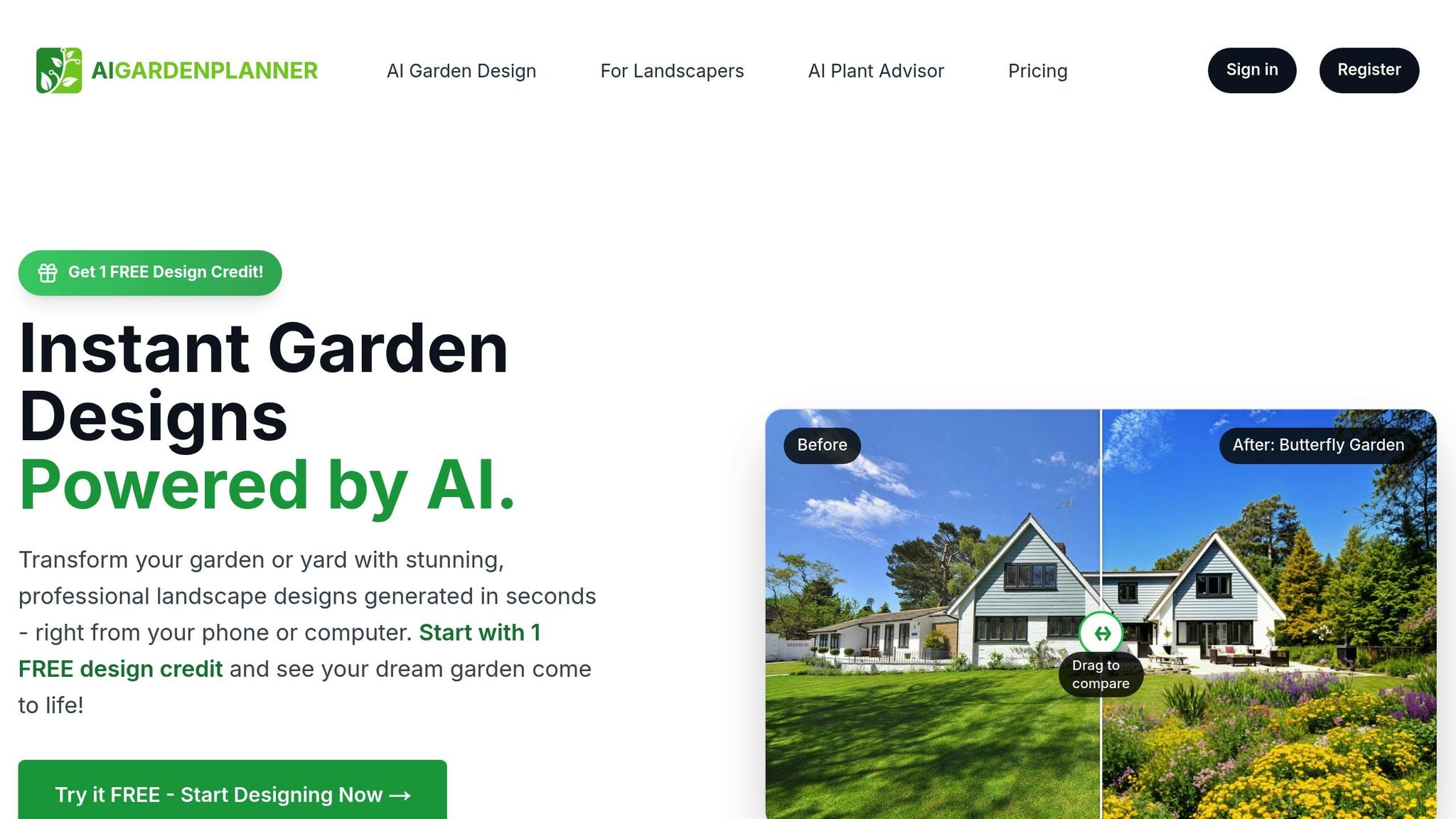
AIGardenPlanner takes these AI-driven insights a step further, offering personalized pest management strategies tailored to your garden's design and plant selection. By uploading a photo of your garden and selecting a style, the platform can identify plants at risk of local pest infestations.
The platform’s recommendations are location-specific, factoring in regional pest patterns. For instance, in areas with high humidity, AIGardenPlanner might suggest pest-resistant plants or companion planting techniques to deter pests like aphids or spider mites naturally.
Custom garden designs created with AIGardenPlanner can also include pest management zones optimized for sensor placement and automated control systems. These designs might incorporate natural barriers - like aromatic herbs known to repel insects - that work alongside AI-driven sensors to keep pests at bay.
The platform also provides detailed growing guides tailored to your garden. These guides include pest monitoring schedules aligned with sensor data. For example, if you grow roses, the guide will advise you on when to check for early signs of disease based on local conditions.
For ongoing maintenance, AIGardenPlanner syncs with AI sensor alerts to adjust schedules for inspections and treatments. If sensors detect conditions favorable for pests, the platform updates your maintenance calendar to ensure timely action.
Professional landscapers can benefit from AIGardenPlanner’s commercial features, which generate comprehensive pest management plans. These plans include recommendations for sensor placement, timelines for expected pest activity, and customized automated response strategies - all designed to integrate seamlessly with the unique layout of each garden.
sbb-itb-4d6a8dd
🚀 Ready to Reinvent Your Garden?
Join thousands of homeowners who have transformed their gardens using our AI design tool. Upload one photo to explore endless possibilities.
Get your AI garden designs →Challenges and Future of AI Sensors in Pest Control
Common Problems with AI Sensor Systems
AI sensor systems in pest control face several hurdles that can impact their efficiency and adoption. One of the biggest challenges is the high cost of installation, which can be a barrier for small-scale farmers and home gardeners. Outdoor sensors are also prone to damage from harsh weather conditions, making them less reliable in certain environments. On top of that, these systems often require regular maintenance, adding another layer of responsibility for users.
False alerts are another persistent issue. Even with advanced cross-checking mechanisms, sensors can misinterpret environmental factors - like wind or passing animals - as pest activity. This can lead to unnecessary treatments, wasting both time and resources. Additionally, connectivity issues can disrupt the system's performance, especially in areas with poor or unreliable internet access.
To tackle these problems, it’s essential to plan sensor placement carefully and commit to consistent upkeep.
Best Practices for Setting Up AI Sensors
Proper planning and setup can significantly improve the performance of AI sensors. Start by conducting a site assessment to pinpoint areas most vulnerable to pest activity. Position sensors strategically to ensure overlapping coverage, which helps eliminate blind spots. Regular maintenance is equally important - schedule inspections, clean the sensors, and calibrate them periodically to maintain accuracy.
Testing the system during a trial phase can help fine-tune its effectiveness. Comparing sensor data with traditional pest control methods during this period can highlight any discrepancies. Lastly, having backup protocols in place ensures the system remains functional during unexpected disruptions.
What's Next for AI Pest Control
Looking ahead, advancements in AI technology are set to address current challenges and make pest control systems more efficient and accessible. For instance, longer-lasting batteries will reduce the frequency of maintenance, while edge computing could enable data processing directly on-site, minimizing the need for constant internet connectivity. Smaller, more affordable sensor designs are also on the horizon, making these systems easier to adopt for a broader audience.
Improved AI algorithms will enhance detection accuracy, cutting down on false alarms and offering more reliable results. These systems may also integrate with smart home technologies, creating a more adaptive and holistic approach to pest management. Additionally, community-based data sharing could allow neighborhoods to coordinate pest control efforts, leading to more effective area-wide solutions.
The future of AI in pest control is shaping up to be both efficient and user-friendly, with innovations aimed at overcoming today’s limitations.
Tithonus: Real-Time Smart Pest Monitoring Detection System for Urban Farming with Farmbot & YOLOv5

Conclusion: AI Sensors Transform Pest Control
AI sensors are changing the game in pest control by enabling precise and proactive management. These sensors gather and analyze real-time data, creating a detailed view of pest activity that traditional methods simply can't provide. This means gardeners and professionals can identify potential pest threats early - before they escalate into full-blown infestations. The result? More efficient and environmentally friendly pest management, driven by actionable insights.
With continuous real-time monitoring, these systems take a data-focused approach to pest control. Instead of relying on routine treatments or waiting for visible signs of damage, decisions are based on actual pest behavior patterns. This smarter approach not only saves time and resources but also reduces the use of broad-spectrum pesticides, which can harm beneficial insects and degrade soil quality.
For those using tools like AIGardenPlanner, AI sensors can be paired with personalized pest management strategies. While the sensors handle detection and monitoring, AIGardenPlanner’s AI Plant Advisor offers tailored recommendations for pest-resistant plants and garden layouts designed to naturally deter pests. Together, these technologies create a well-rounded strategy for preventing pest problems before they start.
As AI sensor technology becomes more accessible and algorithms get even better, these tools are likely to become essential for anyone serious about protecting their gardens or crops. This shift from reactive to proactive pest management marks a major step forward, benefiting both individual gardeners and the agricultural industry as a whole.
AI sensors are redefining how we protect gardens and crops, making pest control smarter, more efficient, and kinder to the environment.
FAQs
How do AI sensors identify harmful pests without confusing them with helpful insects?
AI sensors rely on machine learning algorithms and neural networks to examine high-resolution images of insects in your garden. These technologies are trained to recognize specific traits, behaviors, and movement patterns that set harmful pests apart from helpful insects like pollinators.
By analyzing this information instantly, the sensors achieve an impressive accuracy rate of over 96% in identifying insects. This allows gardeners to take precise measures to safeguard their plants while maintaining the natural balance of the ecosystem.
How can small-scale farmers use AI sensors for affordable pest control?
Small-scale farmers can take advantage of affordable AI sensors for pest control by starting with budget-friendly options that pair with open-source AI software. This combination keeps initial costs low while delivering dependable pest detection.
Another wallet-friendly solution includes using mobile-based AI tools or compact autonomous drones tailored for agriculture. These tools enhance pest monitoring and management without the need for a hefty investment. Additionally, farmers can partner with local agricultural extension programs or co-ops to share AI tools, access training, and pool resources. This collaborative approach not only cuts costs but also boosts overall efficiency.
How does AI ensure accurate pest detection and reduce false alarms?
AI systems rely on machine learning algorithms to process real-time data from sensors that track heat, motion, and sound. These algorithms are designed to distinguish actual pest activity from unrelated movements, such as wind or harmless animals.
By cutting through the noise and ignoring irrelevant signals, these systems dramatically lower the chances of false alarms. This makes pest detection more reliable and enables quicker, more efficient pest control actions.
🎨 Visualize Your Dream Garden Today!
Transform any outdoor space into a professional landscape design in minutes. Just upload a photo, choose your style, and let our AI do the rest.
Start your garden transformation now →Related posts
Related Articles

Discover the Health Benefits of Trader Joe's Garden Vegetable Hash
Learn about the nutritious and delicious Trader Joe's Garden Vegetable Hash, packed with essential vitamins and minerals. Find out why health-conscious consumers are raving about this convenient meal option.
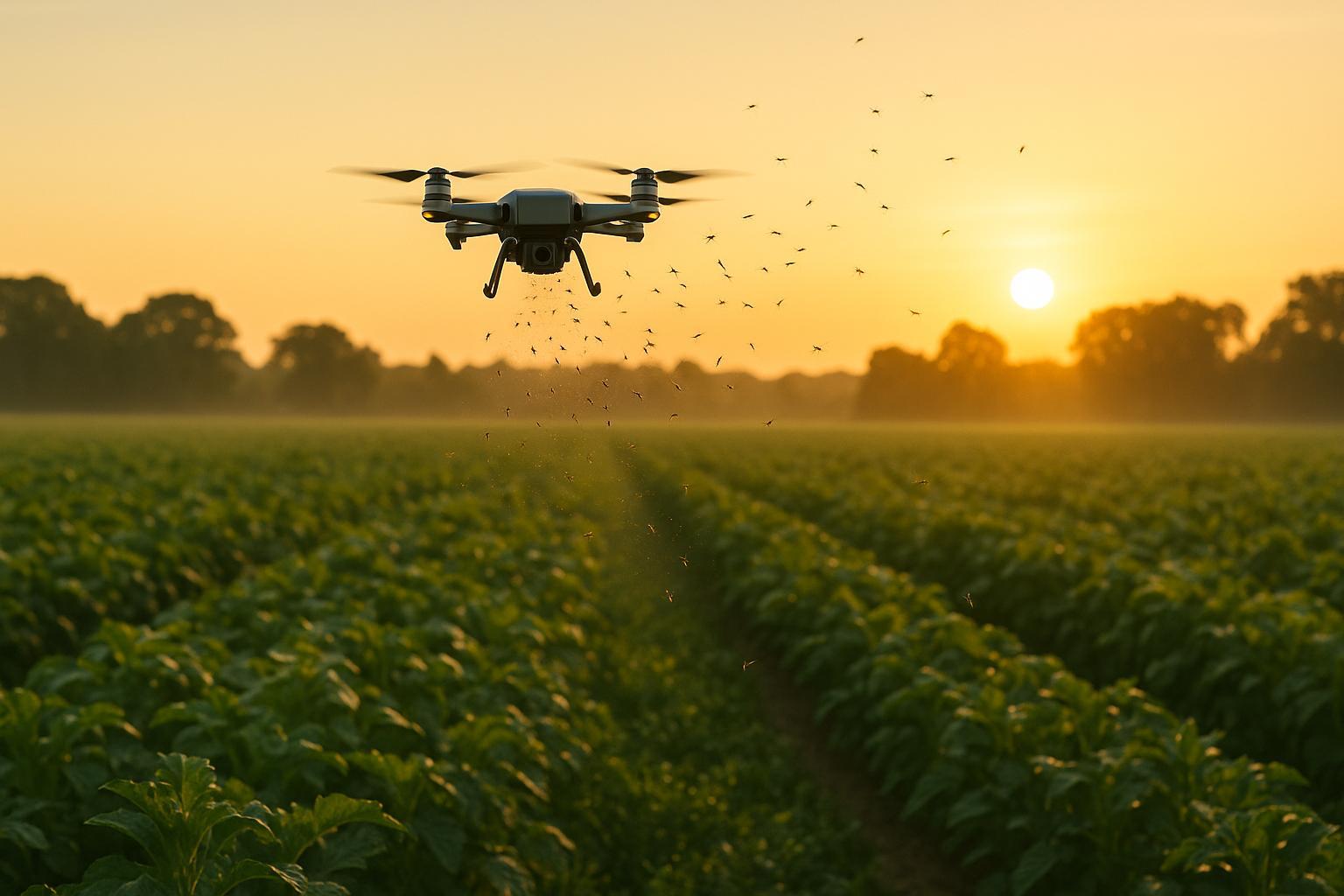
AI Timing for Parasitoid Releases
AI enhances the timing of parasitoid releases for pest control, improving effectiveness and reducing costs through data-driven insights.
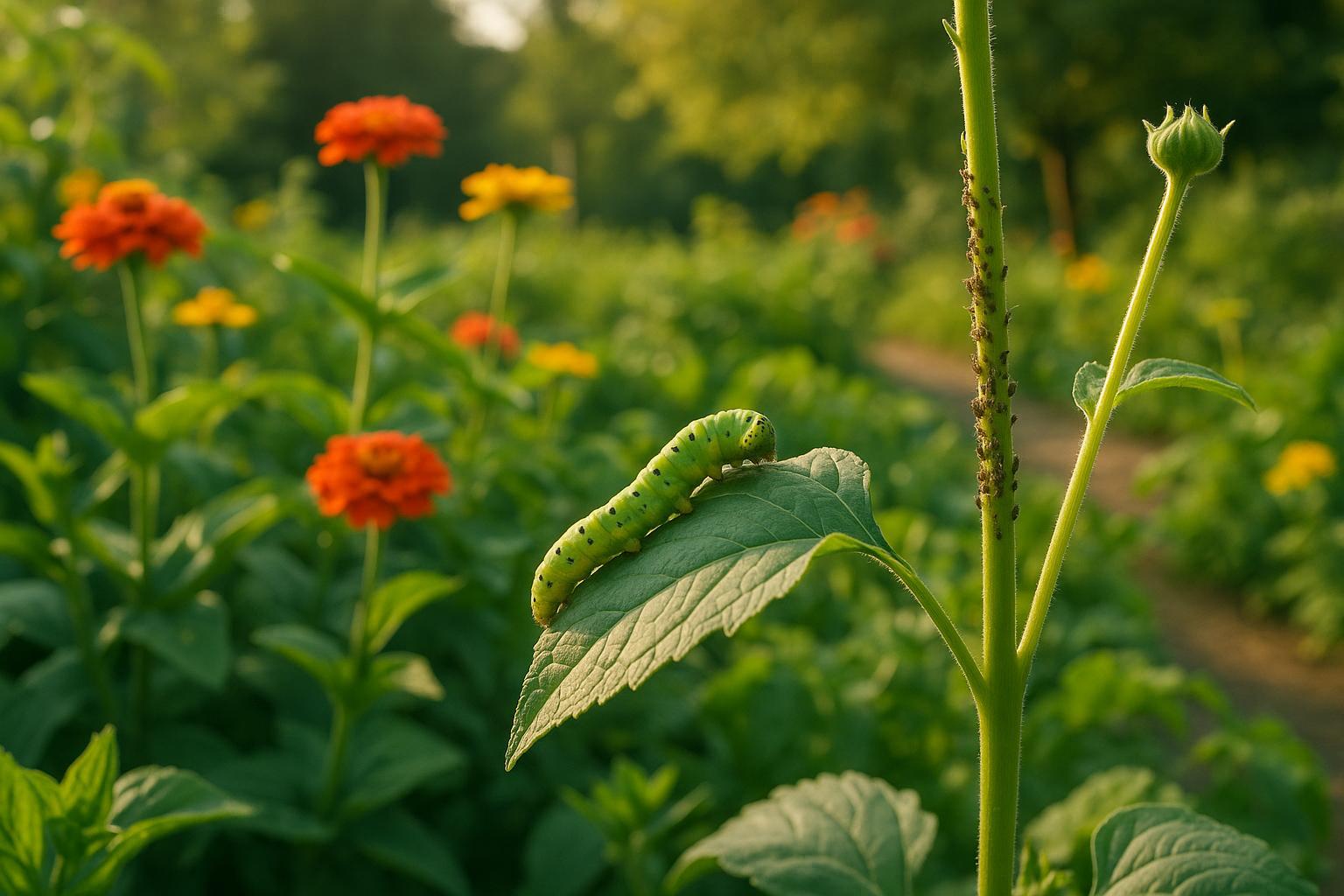
How Climate Affects Pest Risks in Gardens
Climate change is altering pest behaviors, leading to increased risks in gardens. Learn how to adapt and manage these challenges effectively.

AI and Edge Computing: Transforming Pest Management
Explore how AI and edge computing are revolutionizing pest management, boosting crop yields while minimizing pesticide use and costs.
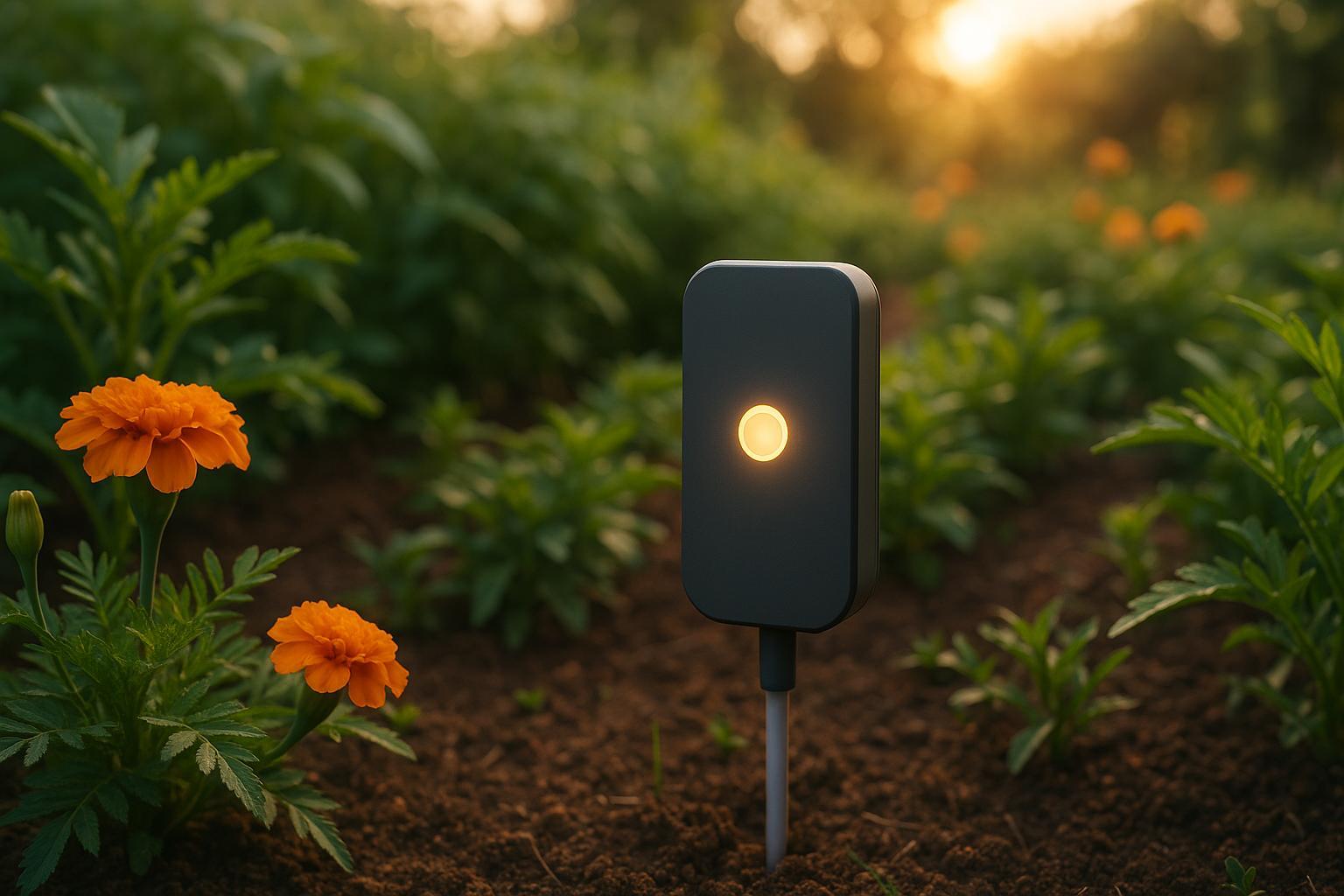
Checklist for Setting Up IoT Pest Sensors
Learn how to effectively set up IoT pest sensors in your garden, from choosing the right devices to ensuring optimal performance.
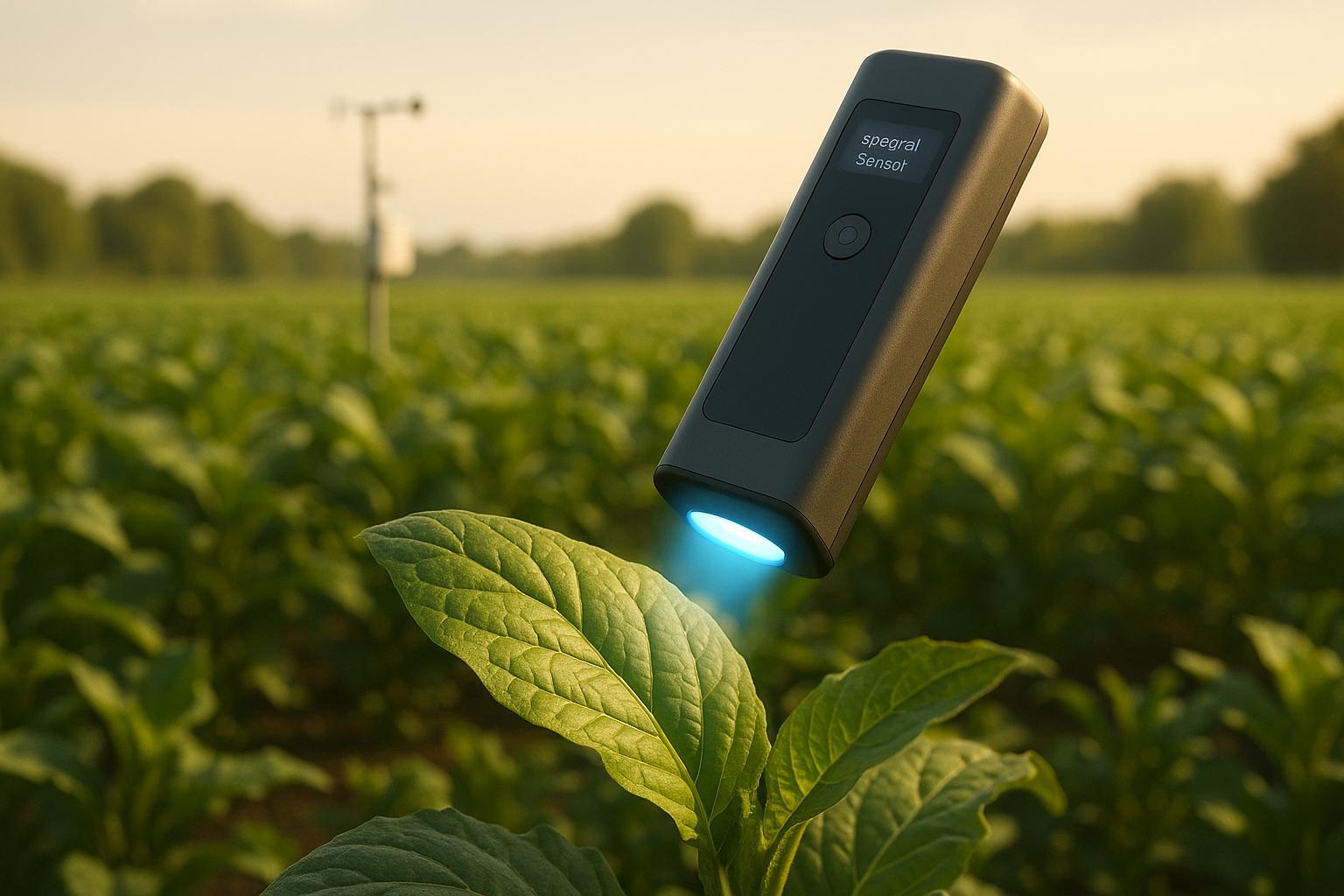
Data Fusion for Plant Disease Detection
Explore how data fusion combines spectral and environmental data to enhance plant disease detection, improving accuracy and early diagnosis.